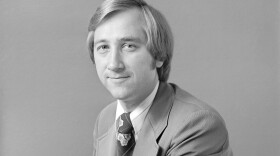There was a time when Frank Sinatra couldn't have it 'his way' with the Gaming Control Board:
Half a century ago, on Labor Day weekend, Nevada gaming control had one of its most amazing moments.
In 1960, Nevada regulators had created the List of Excluded Persons. It came to be known as the Black Book because the state kept the list of names in—you guessed it—a black binder. If you were on that list, you couldn’t set foot in a Nevada casino. Period.
The Black Book has been controversial. There have been charges of bias against people of Italian ancestry. Several of those included in it have challenged its legality. Even Governor Grant Sawyer, who supported its creation, thought it might be unconstitutional, but the courts have upheld it.
The Black Book also stood a test in the late summer of 1963. The Chicago Sun-Times had reported on an incident at the Cal-Neva Lodge at Lake Tahoe. One of the patrons, Sam Giancana, had been involved in a fight there. The problem wasn’t the fight. It was that Giancana was in the Black Book. That meant he wasn’t supposed to be there, so the licensed owners and executives would be in trouble.
Making things more interesting, the licensed owner was Frank Sinatra … as in the chairman of the board and the leader of the Rat Pack. For whatever reason, the news about Giancana didn’t reach Nevada for about a month … remember, no internet or twitter back then. When the news arrived, though, it was big news. The chairman of the Gaming Control Board, Ed Olsen, himself a former journalist, told reporters there was an investigation. Sinatra decided to talk about the story with Olsen.
Their conversation did not go well. Sinatra complained that Olsen wouldn’t come to the lodge so he could explain himself, although licensees are the ones who have to go to the regulators. He accused Olsen of causing the publicity, although Olsen had had nothing to do with it. Sinatra told Olsen he would never come to see him again. Olsen replied that if he wanted to see Sinatra, he would send a subpoena. Sinatra replied that if Olsen did that, he could expect what he called a big surprise. He called it something else, too, but this is public radio, not shock radio, so we’ll leave that part to your imagination. It’s enough to say that Olsen called his tone menacing and asked Sinatra whether he was making a threat.
After all that, Sawyer told Olsen, “Do the right thing and do not be intimidated by him.” Sawyer said he received a couple of unpleasant letters from Sinatra’s attorney. But in the end, Sinatra gave up his gaming licenses, and that was the end of it.
Except … less than a month later, Sawyer welcomed a visitor to Las Vegas: President John F. Kennedy, who had enjoyed support from both Sinatra and Sawyer in the 1960 campaign. Almost the first words the president said to the governor were, “What are you guys doing to my friend Frank Sinatra?” Sawyer replied, “Well, Mr. President, I’ll try to take care of things here in Nevada, and I wish you luck on the national level.” Then Sawyer said, “That was about the end of that.” Sinatra seemed to survive it all right.










